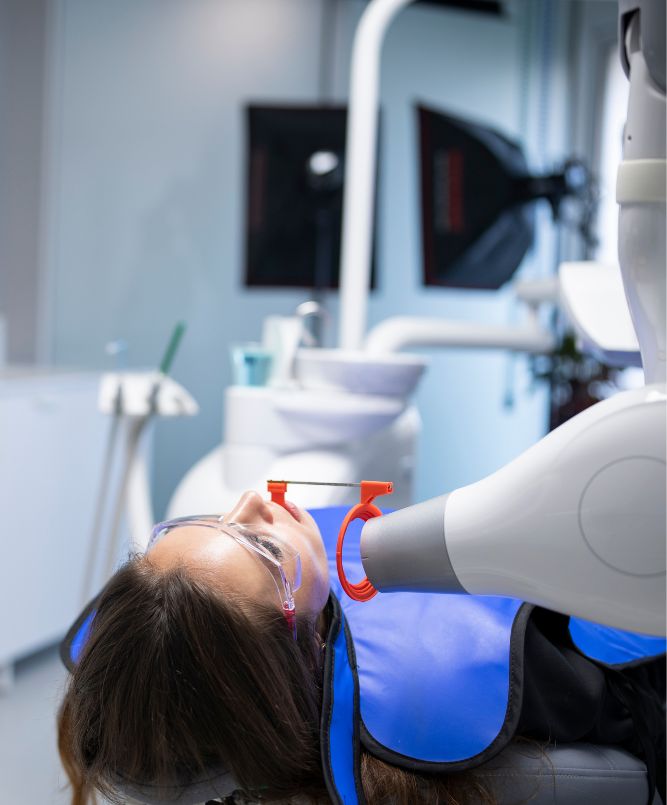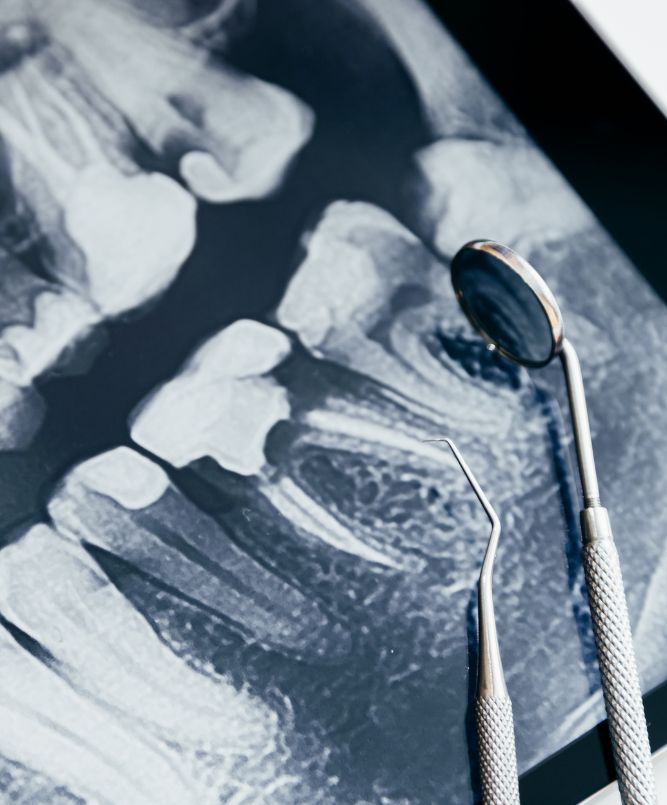Special Offer
From February 1 Every Monday Up To 6 FREE Dental X-Rays
Dr. Anahid Youssoufian chooses carefully which and when radiographs are taken.
Frequently Asked Questions
There is a difference between normal X-ray and a digital X-ray.
Digital X-Rays replace the traditional ones with advanced sensors, either plate or video types, which are either connected to a computer directly or through a laser scanner. This technology allows for the immediate processing and display of images on a computer screen, significantly enhancing diagnostic accuracy and speed.
Digital dental X-rays significantly minimize radiation exposure, reducing it by up to 80% when compared to traditional film techniques. The amount of radiation encountered during standard digital radiography sessions is exceptionally low.
There are many guidelines that we follow.
Radiographs allow us to see everything we cannot see with our own eyes. Radiographs enable us to detect cavities in between your teeth, determine bone level, and analyze the health of your bone. We can also examine the roots and nerves of teeth, diagnose lesions such as cysts or tumors, as well as assess damage when trauma occurs. Dental radiographs are invaluable aids in diagnosing, treating, and maintaining dental health. Exposure time for dental radiographs is extremely minimal.


Dental digital X-rays make for a better and more efficient patient experience. Office visits are faster, patients are exposed to less radiation, and radiographs can be sent to a specialist for review in a fraction of the time necessary for traditional film X-rays.
We use the most modern, up-to-date digital xrays and digital sensors. This gives us a higher diagnostic quality and also limits exposure when taking X-rays. We can also read the digital x-rays right away without having to develop the film.
Digital Xrays
Dr. Anahid Youssoufian chooses carefully which and when radiographs are taken. There are many guidelines that we follow. Radiographs allow us to see everything we cannot see with our own eyes. Radiographs enable us to detect cavities in between your teeth, determine bone level, and analyze the health of your bone. We can also examine the roots and nerves of teeth, diagnose lesions such as cysts or tumors, as well as assess damage when trauma occurs. Dental radiographs are invaluable aids in diagnosing, treating, and maintaining dental health. Exposure time for dental radiographs is extremely minimal.
Dental X-rays make for a better and more efficient patient experience. Office visits are faster, patients are exposed to less radiation, and radiographs can be sent to a specialist for review in a fraction of the time necessary for traditional film X-rays.
We use the most modern, up-to-date digital xrays and digital sensors. This gives us a higher diagnostic quality and also limits exposure when taking X-rays. We can also read the digital xray right away without having to develop the film.

